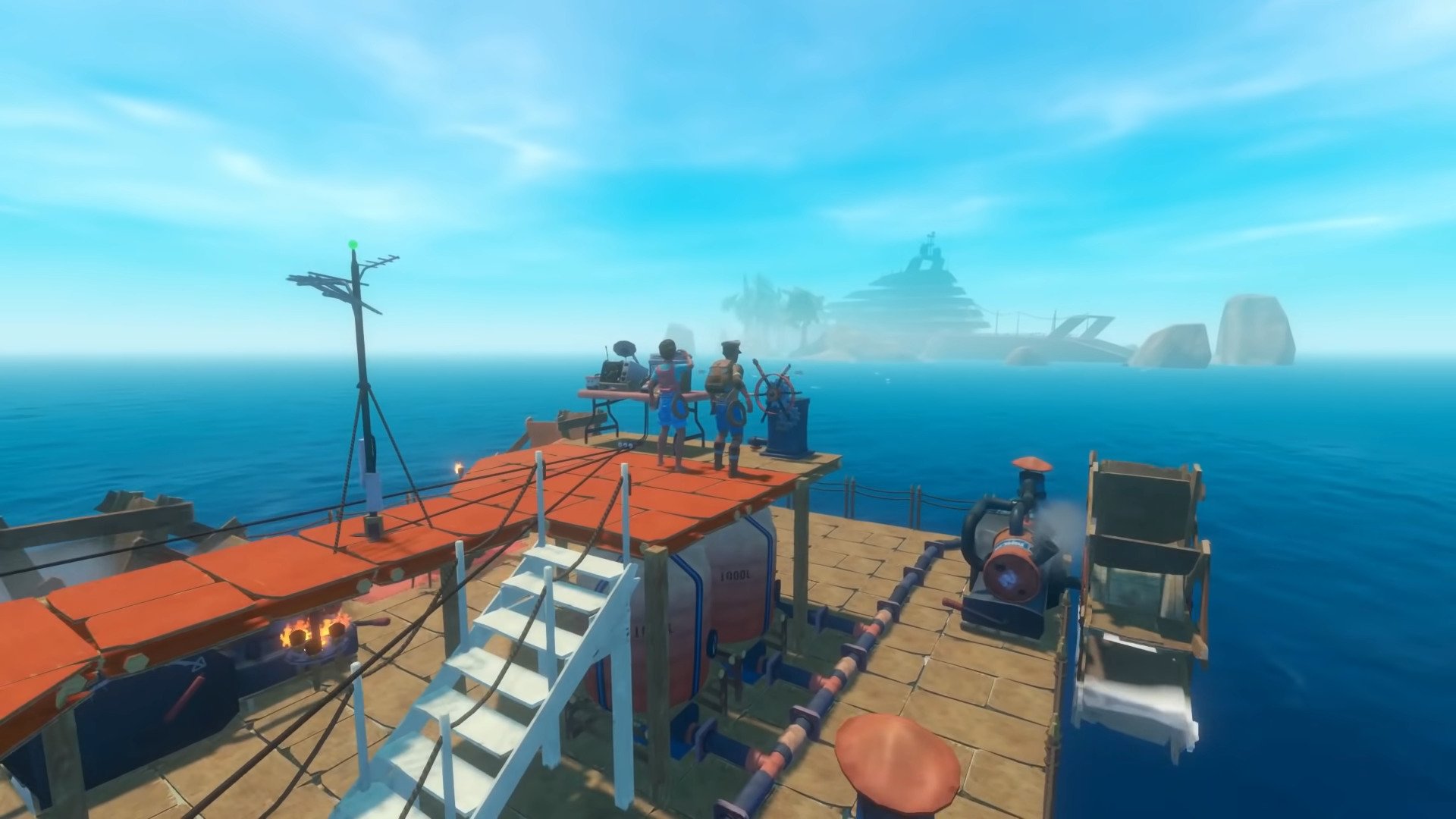Raft comes from Redbeet Interactive and joined the Early Access program (May 23, 2018) on Steam to soundly positive reviews, with the primary complaint thus far being a lack of content and your raft experiencing an occasional bout of seizures as you dock into one of the seemingly infinite tiny islands that dot the landscape.
Now on their third year within the Early Access program, Raft has just dropped the second chapter (twelfth update) of their survival-crafter with far larger lands to explore, more foes, new tools letting survivors move around quicker, and it’s all sandwiched in between the strangest bouts of relaxation that can be experienced in a survival crafter.
In the title, survivors begin on an extremely small (2 x 2) platform that they must enlarge by means of picking up floating debris and flotsam from the vast ocean that is to become the penultimate playground of users. You’ll throw the hook out and pull it back in, hopefully with a wealth of crafting materials on the hook, a seemingly infinite number of times as you begin to use the general pieces of trash to craft pieces that will extend your life.
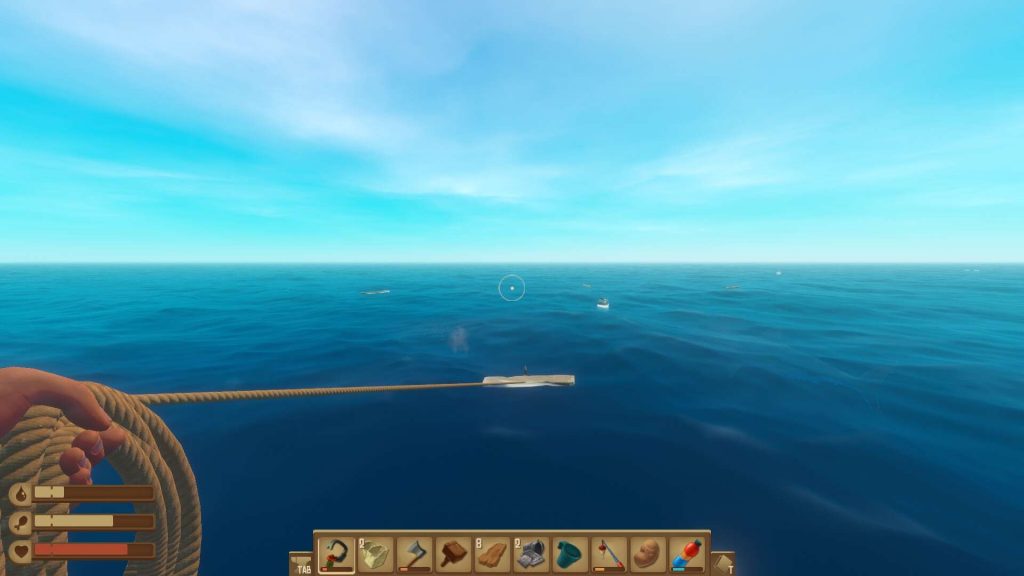
Plastic and wood become the foundation of your raft, scrap metal can become a grill, plastics are necessary to craft cups which ultimately allow you to boil water; the progression throughout the entirety of Raft thus far has been meandering yet listless, the ocean rocking your raft as you fish for three days straight in what could be mistaken for an idyllic life away from other humans.
Or would be, if not for the incessant hunger of a shark named Bruce that will stay near your raft throughout the entirety of the game, attempting to take a bite of your face every time to hop into the water. If you simply don’t hop into the water, ol’ Brucie is still a problem; he’ll take bites out of your raft (forcing you to lose precious materials) as you drift wantonly unless you poke him with a spear thrice (damaging its durability, becoming another resource sink at a far slower pace).
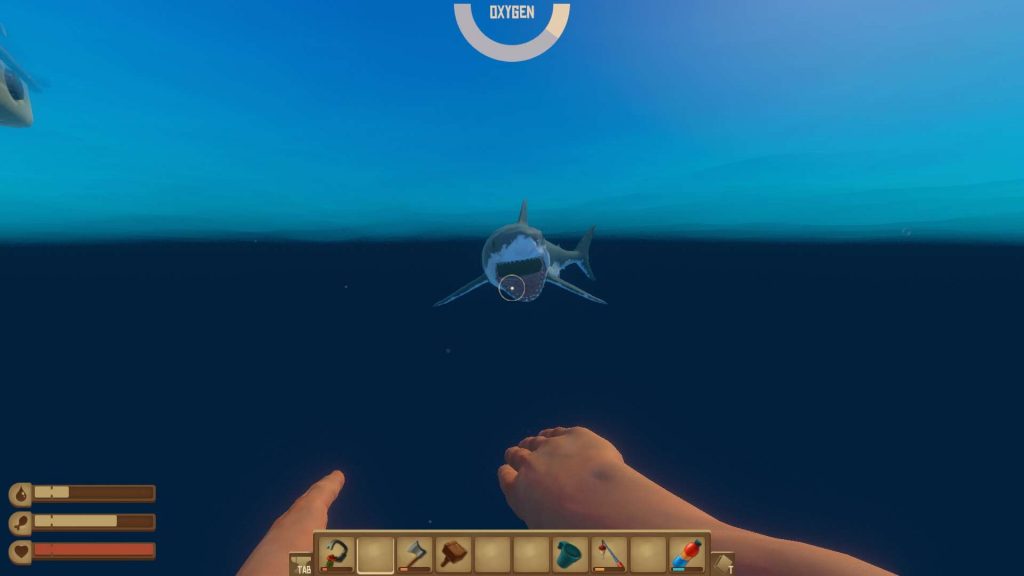
Bruce, the shark, is the primary enemy in the title; an ever-present threat that will wear out his welcome early and often. Your second enemy is the danged seagulls that encircle your raft permanently, swooping in to damage your crops or scarecrows which acts as another form of an unwelcome resource sink over time.
The biggest obstacle that you’ll face in Raft is the unending thirst and hunger, which deplete at a rate that makes you wonder if the protagonist you’re playing as has some rare medical condition that forces them to eat six fish a day or starve, forcing players to lose everything in their inventory that hasn’t been crammed into storage containers that seem six times too small.
You can play on easier difficulty settings to nerf the more egregious depletion, but custom-tuning the rates are impossible at the moment without third-party mods.
If you can dodge these three inconveniences that surmount into the general survival experience of Raft, you’re in for a good time; even better if you’re not one to shy away from mods that bring the experience to a whole other level by allowing players to shift specific mechanics in the game to better suit them.
Adding more sails or engines can be modded to make the ship faster, you can have Bruce stop nibbling on your raft, or even make the seagulls passive and stop ruining your crops. The title is in early access, and already has a decent heft of around 30 game-altering mods that can be used and experimented with in a manner that promises to extend the lifespan of the title on your shelf.
Adding in additional friends to help manage your raft is simple as well, but be warned that there are no dedicated server tools yet to fine-tune the experience as admins are likely used to on similar survival-crafters such as Minecraft and Ark: Survival Evolved. We strongly recommend ignoring everyone in your Discord channel that isn’t talking like a pirate during gameplay.
Further, the titular feature can be created in nearly any manner you see fit; you’re stopped only by your imagination as rafts have been shown in the past that would make Noah envious. The only drawback currently of the raft is that there is no way to make one point of your drifting the ‘front’ until later in the game (thanks to the release of Chapter One), resulting in relatively obnoxious and unattractive boxes with little room to improve the aesthetics of without hampering the viability of the build as they spin randomly around the ocean depending on the breeze.
If you don’t want to spend weeks throwing a hook out into the ocean and trying to grab a piece of flotsam to construct with, you’ll need to build nets that catch any waylaid flotsam that your raft hovers over; being that you tend to drift at the mercy of the current and wind, you end up with long lines of the nets on all sides of the raft which becomes both tedious to manage and visually unappealing.
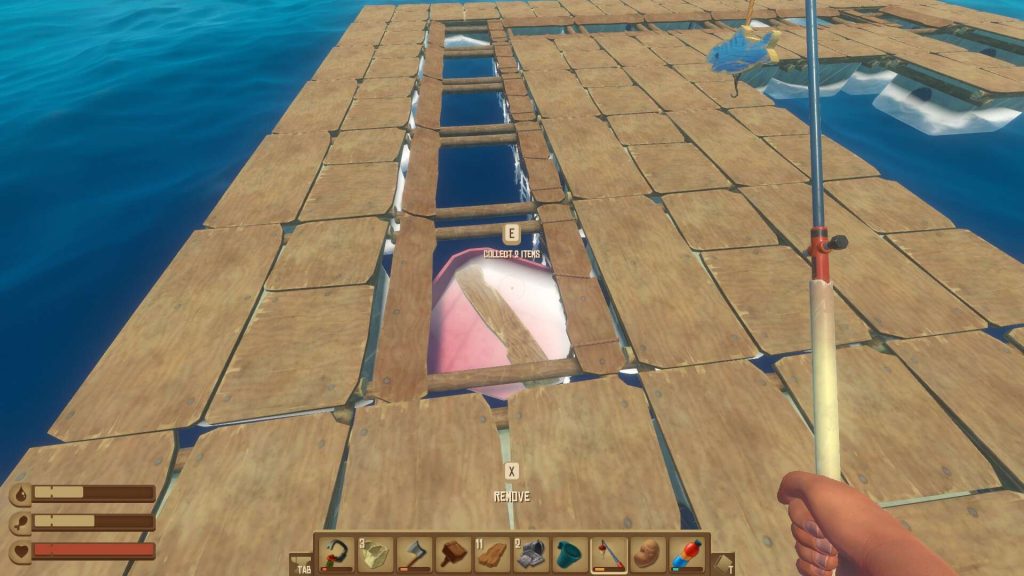
It’s to the point that many argue the only ‘proper’ way to begin is by building 30 platforms out from the starting raft on either side, and sprinting from side to side to ensure you can catch everything until you can replace them with nets; then you sprint from side to side removing everything that was automatically caught.
Min-maxing in this way is possible, but it could very well ruin a bit of the experience unless you’re fond of traveling about in shoeboxes or geometric nightmares until late-game.
We discussed Raft briefly when the first chapter came out, bringing with it a bit more of a robust exploratory experience that didn’t feel as much like reliving Tom Hanks in Castaway, but the newly released chapter shows just how far Redbeet Interactive is willing to take their title, which actually edges it into the realm of something you should absolutely be aware of within the indie-game scene.
"The Second Chapter" is out NOW! And it is 33% off! 🌵🤩
You can read all about the update here:https://t.co/xZUsmpAa1x— Raft™ (@RaftSurvivaGame) October 8, 2020
New locations now dot the frightening large expanse of ocean with a town and city (Caravan Town and Tangaroa) which brings a few puzzles to solve, locations to explore, and new enemies (added onto those brought in Chapter One) that will stand in the way of your progression.
These towns make ample use of the new mechanic of ziplines, bring in a few more storage options, and overall make the feeling of playing Raft a bit more exploratory and rewarding instead of falling upon similar-looking islands endlessly to harvest three trees and some flowers.
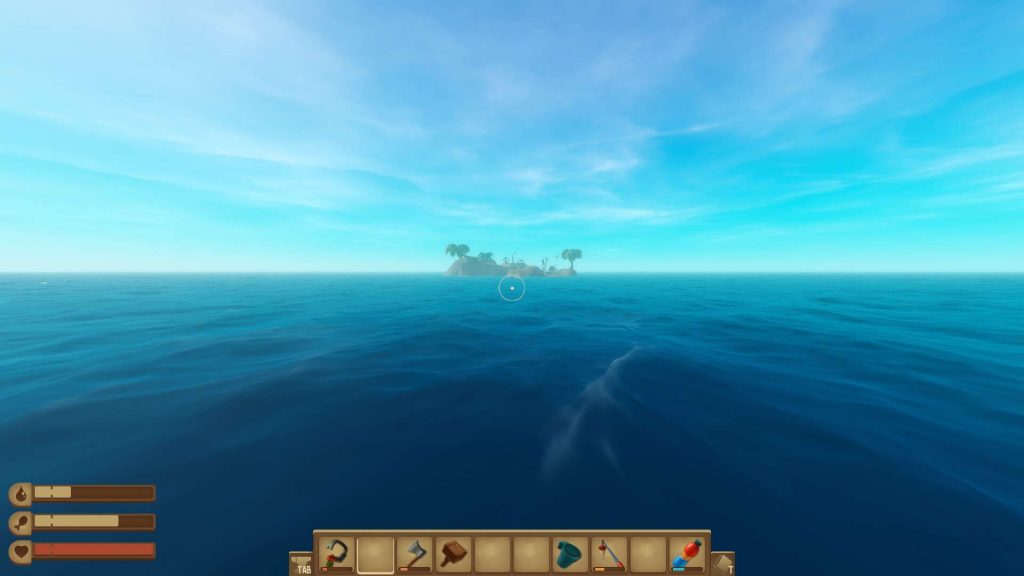
If they continue the charge forward of adding a heft of content with each additional update, Raft could very well be considered a must-play; yet this brings us to a major sore point right now for curious consumers.
There is currently no publically available roadmap from Redbeet Interactive regarding the upcoming development of Raft. How much more content they are planning to add to this title, and when it can be expected, seem to be great unknowns at the moment.
How developers are still missing roadmaps is a bit of a mystery, as it’s arguably one of the clearest forms of engagement and information with an audience that can allow players to understand what they should expect in the finished state. Players have been attempting to find a public-facing roadmap of Raft since as early as May, 2018, within the first week it has been released, and there is still no ready response from RedBeet regarding the requests.
Raft is currently available on Steam for $20; there are no versions currently playable on any of the consoles, but it could likely have a glance once it is fully released. With modding support already being ingrained into the title, and massive helpings of content with every newly released ‘chapter’, Raft is a title you should absolutely be tracking.
